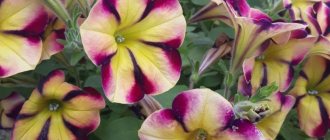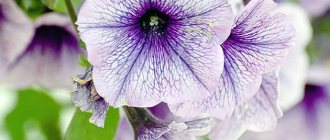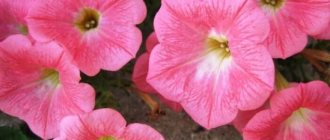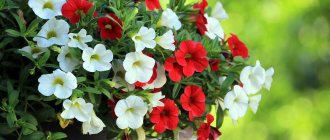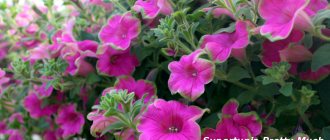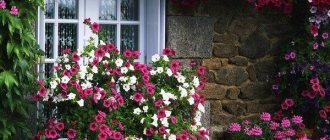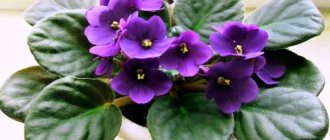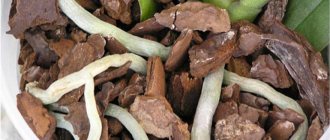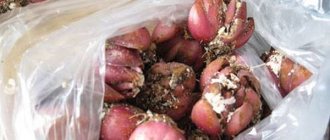Photo: totalhub.ru Petunia deservedly receives the love and admiration of gardeners around the world. Few annuals can compare with it in the variety of varieties, shapes and sizes. You can plant a whole flowerbed of petunias, and each bush will be different from the previous one. We tell you how to properly care for this capricious beauty!
general information
Petunia is a bushy ornamental flower with creeping or straight shoots. It has expressive oval leaves up to 12 cm in size and a deep dark shade. Most often, the plates are pubescent, and bright petals look especially elegant against their background.
Petunia bushes can grow up to 0.7 m, but there are very tiny varieties up to 15-20 cm. On short peduncles, funnel-shaped flowers with regular or double inflorescences open wide. When growing indoor varieties, keep in mind that petunia flowers can have a very strong smell.
Breeders and gardeners have been dealing with petunias since the eighteenth century. The now popular hybrids began to be bred about a hundred years ago to decorate the balconies of mansions. Then they migrated to flowerpots, and soon filled the gardens.
Photo: pixabay.com
Rare varieties
Petunia care and cultivation at home
The following varieties of petunias are considered quite rare:
- Black Velvet. A species that belongs to the grandiflora subgroup. The variety was bred not long ago by British breeders. Large bells are painted black. It is best to plant these flowers in pots.
- Table Yellow. Ampelous alpine petunia, the inflorescences of which are painted in lemon colors. You can see bright yellow veins on them. The height of the bush reaches 25 cm. The diameter of the buds is in the range of 10-12 cm.
Types of petunia
All varieties of petunias are divided into two large categories - multi-flowered and large-flowered. They are also called multiflora and grandiflora, respectively. There are several intermediate categories and a whole garden group that covers dozens of different subspecies.
Petunia Fantasy
This is a compact variety from the multiflora category with red, crimson, salmon and pink flowers. Less common are purple, white, blue and cream hybrids. Multiflora petunias bloom earlier, are not picky and are better suited for gardens. The diameter of the flowers is about 5 cm, but there are a lot of them and they are unpretentious.
Photo: rotarygardens.blogspot.com
Petunia Plum Crystal
An interesting feature of Plum Crystal petunia is its ability to change the shade of its petals. Gradually they fade from lilac to almost whitish. The flowers are decorated with dark and expressive burgundy-violet veins.
Photo: oir.mobi
Petunia Dormouse
Dormouse is a floribunda petunia with large flowers that look especially good in a mass. The series is notable for its wide variety of colors. For example, raspberry or burgundy with a white center or pale lilac with dark purple streaks.
Photo: solo-semena.ru
Petunia Picoti
Large and expressive ruffled flowers are the main feature of this small category of grandiflora petunias. Bushes up to 25 cm will be an ideal decoration for terraces, gazebos and open balconies. The rich crimson-red or violet-blue hue is emphasized by the white edging.
Photo: oir.mobi
Petunia Celebrity
Another series of floribunda petunias is notable for its unusual colors. It includes varieties with two-color or three-color petals. They are resistant to rain and heat, so they get along well in the garden or open boxes.
Photo: fedsp.com
Petunia Surfinia
Small garden petunias Surfinia are also called balcony petunias, although the series includes varieties of different sizes. The diameter of tiny Mini Pink flowers is up to 0.5 cm, and large hybrids are up to 9 cm. The palette has all possible shades, except yellow-orange.
Photo: oir.mobi
Tree hydrangea: varieties, care features (60 photos)
Classification of the new most beautiful and best species according to basic characteristics
Petunia acquired its name more than 120 years ago.
It was first discovered and named by Indian tribes in the Amazon River basin. It was thanks to the efforts of this people that two flowers were isolated from 40 species of wild plants, which became the progenitors of a huge number of petunia hybrids. At the dawn of its decorative glory, the plant lived in southern countries, preferring warm and sunny areas of the territory. But through selection, varieties were developed that easily adapted to the more severe climatic conditions of life in the northern regions.
Reference! Long-lasting and less demanding petunias have slightly smaller inflorescences. This variety includes, for example, the Bravo series, as well as Polo and Hurray from the actively flowering multiflora group.
It is not possible to create an unambiguous and clearly structured classification of petunias. But a simplified version of systematization can come to the aid of an inexperienced florist, who gets in the way of the complexity of nomenclature. It looks like this:
- According to the appearance of the bush:
- ampelous;
- cascade;
- bush.
- According to the nature of flowering and the diameter of the buds:
- grandiflora;
- floribunda;
- milliflora;
- multiflora.
- According to the structure of the buds:
- simple;
- terry.
This classification makes it possible to classify the plant into several species groups at once.
Individual varieties are distinguished by growth vigor and type of shoots. Their diversity can also be classified according to:
- color scheme;
- bud size;
- jagged edges of petals;
- the presence of veins, white stripes and a lightened center.
Some petunias have a powerful aroma, while others have a less intense scent. Next, you can read the names, characteristics, descriptions and see photos of different beautiful types of petunias.
Petunia care
It is difficult to find a more versatile flower that can be equally successfully grown on a window, in hanging flowerpots, balcony boxes, greenhouses and gardens. Except that in our climate, perennials in open ground turn into annual varieties.
Temperature
Petunia really needs warmth - and this is precisely the reason why it does not winter in our climate. The ideal temperature for germination is above 23 degrees. Be sure to avoid sudden changes and always accustom the flower to new conditions gradually. Ideally, during the day it should be about 18-20 degrees, and at night - at least 15.
Photo: dachnaya-zhizn.ru
Lighting
Petunia loves light very much, and this is a fundamentally important criterion for flowering. Therefore, if you plant seedlings at the end of winter, they will most likely have to be illuminated with phytolamps. If the seedlings are too dark, they will grow weak and sickly, and mature bushes will begin to wither.
Photo: u-florista.ru
Watering
Petunias need moderate watering because both extremes are fraught with problems. If the soil dries out too much, the flower will dry out along with it, and due to excess water the plant will rot. Pour water carefully, because it is important not to flood the stem and leaves.
Photo: 2sotki.ru
The soil
Petunias definitely need loose soil based on deciduous soil or turf. You will need good fertilizers to help the soil absorb nutrients. Add sand and peat to the substrate to provide it with the desired loose texture.
Photo: rastenievod.com
Fertilizers and fertilizing
Like all flowering plants, petunias need regular, systematic feeding. Already a week after planting, the first portion of fertilizers is applied to the ground, and the next - every week and a half until the end of summer. Occasionally, instead of ready-made complex fertilizers, apply organic fertilizers. Keep in mind that fungal diseases often develop due to manure.
Photo: comfortclub.ru
Transplantation and propagation
If you have enough warmth and light, then ampelous and double varieties can be propagated by cuttings all year round. Take apical cuttings with 4-6 leaves and tear off all but the top two. After this, plant the cuttings immediately in the seedling substrate, but for the first time sprinkle them with perlite on top.
Young petunia shoots take root in 1-2 weeks, depending on the variety and conditions. Grow them in separate pots and pinch them as they grow so that they bush beautifully in the future. By the way, after pinching, cuttings can be used again as cuttings for propagation.
If you are growing seeds, sow them in February (with lights) or late March (without). Combine them with sand and spread them over the moistened substrate. Leave the boxes in a warm place under glass or transparent film for at least a week, until the first seedlings sprout. Don’t forget to ventilate your improvised greenhouse a couple of times a day.
Photo: 2sotki.ru
Wintering
Petunia is a perennial, but to preserve it, you will have to dig up the flower by mid-autumn. Trim all the shoots, transplant the bush into a pot and move it to a cool, dark place with infrequent watering. At the end of winter, place the flowerpot on the windowsill, gradually increase the frequency of watering and gradually introduce the petunia to the daily rhythm of life.
Photo: posaju.ru
Hydrangea (80 photos): types and features of care
How to properly care?
Watering
For some time, petunia can do just fine without water. So it’s not a big deal if you can’t water it for 4-5 days. But for its successful growth and flowering, regular moisture is required. When watering, pour water under the root so that it does not fall on the flowers .
If you grow petunia on balconies, then during the summer heat, water it in the evening and in the morning, and also spray the plant. Just make sure that the water droplets are small. Then no spider mite is scary. Petunia mix can tolerate waterlogging, but not stagnant water. If there is prolonged rain outside, the plant stops blooming and loses its decorative effect.
Feeding
For successful development and abundant flowering, mini petunias need feeding. Apply them every 7-10 days, and start from the moment of planting and continue until August. For fertilizing, use complex fertilizers with a high concentration of potassium. It is allowed to add humus and compost, but they should not be fresh, otherwise this will lead to the development of fungal diseases.
Pest and disease control
The main pest of petunia is spider mites, which are difficult to notice until there are too many of them. There are also thrips that leave dried whitish streaks on the leaves. And the third invisible enemy is aphids, which provoke the appearance of fungus and infections. The control mechanism is the same in all cases - timely and regular treatment with insecticides.
Powdery mildew is a type of fungus that appears as a white coating on the leaves. Gray rot develops due to excess moisture or improper care. Blackleg is a rare aggressive disease that literally “burns out” seedlings. With such diseases, it is fundamentally important to urgently stop their spread and remove all damaged plants.
Photo: zverjata.ru
Ageratum (70 photos): types and features of care
Petunia – photo
Petunia is a bright and hardy plant that causes almost no problems, but at the same time decorates the garden. Look how beautiful and impressive it looks in the flowerbed until late autumn!
Photo: oir.mobi
Photo: goodfon.ru
Photo: petunii.ru
Photo: zen.yandex.ru
Photo: teplica-one.ru
Photo: greensotka.ru
Photo: solo-semena.ru
Photo: vk.com
Photo: pxhere.com
Photo: oir.mobi
Photo: stroy-podskazka.ru
Photo: fruitree.ru
Photo: art-pen.ru
Photo: mir-ogorodik.ru
Photo: sm-news.ru
Photo: pixabay.com
Photo: botanichka.ru
Photo: plantclub.com.ua
Photo: domashniecvety.ru
Photo: kpravda.ru
Photo: infourok.ru
Photo: lalend.ru
Photo: t.me
Photo: pxfuel.com
Photo: riafan.ru
Photo: posadkavgrunt.ru
Photo: oir.mobi
Did you like the post? Subscribe to our channel in Yandex.Zen, it really helps us in our development!
Use in landscape design
Petunia is an unpretentious plant that is often used by landscape designers in the process of landscaping the local area. Bushes are effectively used when grown in:
- rockeries;
- alpine slides;
- mixborders;
- rectangular flower beds;
- vertical beds;
- hanging flowerpots.
Advice! It is best to arrange contrasting colors when planting varieties.
Petunia looks amazing when planted in alpine hills. The unpretentiousness of plants, abundant and long-lasting flowering are significant advantages of an ornamental crop. By turning on your imagination, you can create many original compositions on your site.
